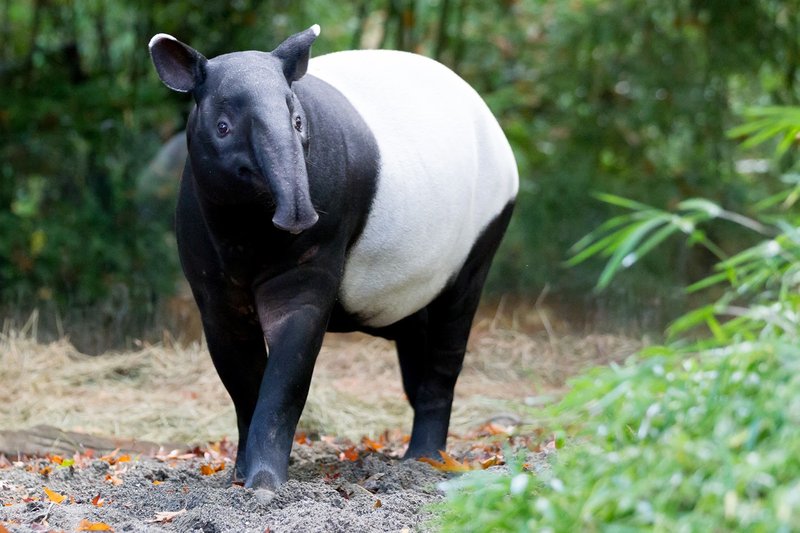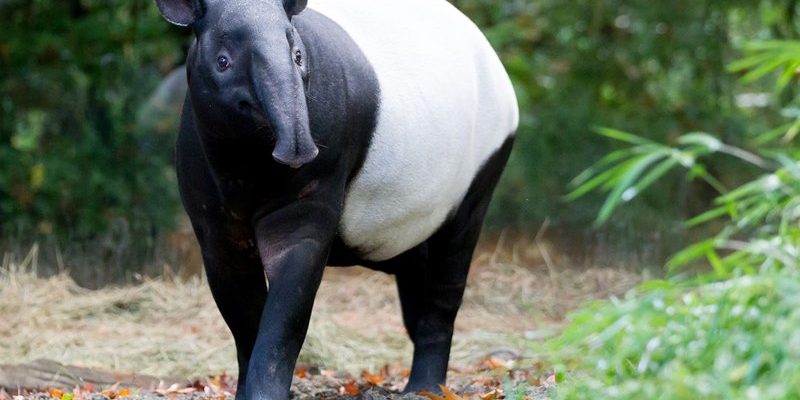
The Malayan tapir has a fascinating way of balancing its needs with the challenges of its habitat. From dense rainforests to mountainous regions, these creatures know how to navigate their world. They may not be the fastest or the fiercest, but they have a toolkit of adaptations that allow them to make the most out of their habitats. So, let’s dive deeper into how Malayan tapirs survive in harsh environments!
Understanding the Malayan Tapir’s Habitat
Malayan tapirs primarily reside in the tropical rainforests of Southeast Asia, which can be a tough place to call home. The humidity is high, and the dense underbrush makes it easy for animals to get lost. Here’s the thing: these tapirs have evolved in such a way that they can maneuver through thick vegetation with ease. Their short legs and stout bodies help them navigate the underbrush while their long snouts allow them to reach food that’s just out of reach.
Tapirs also prefer areas near water bodies. They’re excellent swimmers, using rivers and streams to escape predators and to cool off during the hot day. Imagine lounging by the pool, but the pool is a river teeming with life! This dual habitat of land and water supports their diet, which consists mainly of leaves, fruits, and aquatic plants. So, in a way, they’ve tailored their habitat to their feeding needs, making them masters of their environment.
Diet and Foraging Techniques
When it comes to food, Malayan tapirs are herbivores and have a pretty flexible diet. They consume a variety of plants, including leaves, fruits, and even bark. You might be wondering how they manage to find enough food in their dense habitat. Here’s the secret: they’re nocturnal foragers. By being active at night, tapirs avoid the heat of the day while also reducing the chances of running into hungry predators.
Their long, prehensile snouts act like a built-in tool for foraging. Imagine having an extra pair of hands that can reach into tight spots to grab a tasty snack! Their sense of smell is also incredibly sharp, allowing them to sniff out ripe fruits even from a distance. This ability to forage effectively ensures that they have a steady food source, no matter how tough their environment gets.
Adaptations for Rainforest Living
Living in the rainforest requires some serious adaptations, and the Malayan tapir doesn’t disappoint. Their thick skin offers protection against the elements and various insects, while their dark coloration helps them blend in with the forest floor. This natural camouflage allows them to avoid detection from predators like tigers and leopards.
Additionally, tapirs have a unique way of regulating their body temperature. They often take dips in the water when it’s hot, similar to how we might jump into a swimming pool to cool off. By staying close to water, they not only stay hydrated but also maintain a comfortable body temperature. This clever adaptation is vital for survival in such a humid climate.
Predators and Threats
While Malayan tapirs have their own tricks for survival, they still face threats in their environment. Natural predators like tigers and large snakes can pose a danger, especially to younger tapirs. But here’s the twist: adult tapirs are quite heavy and tough to take down. Their size, combined with their stealthy behavior, helps them evade many potential predators.
Human activities are one of the bigger threats they face. Deforestation for agriculture and urban development has significantly reduced their habitat. This loss not only makes it harder for them to find food but also increases their encounters with humans. Conservation efforts are crucial to ensure that these unique animals continue to thrive in their natural environments.
Social Behavior and Reproduction
Malayan tapirs are primarily solitary animals, which is somewhat unusual for large mammals. However, they do come together during mating season. Male tapirs will roam larger distances to find a mate, and once they do, they engage in a brief courtship. After a gestation period of about 13 months, a single calf is born. Think of it as a long-term investment in the next generation!
The calves are typically hidden in thick vegetation to protect them from predators for the first few months of their lives. This strategy is essential because the young tapirs are more vulnerable when they are small. Mother tapirs often stay close to their young, providing protection and nurturing until they are ready to venture out on their own.
The Importance of Conservation
Conservation is vital for the survival of the Malayan tapir. Efforts to protect their habitats and address threats from poaching and deforestation can help ensure these incredible creatures continue to roam the forests of Southeast Asia. Local and global organizations are working to raise awareness and implement strategies to protect tapirs and their ecosystems.
By preserving their habitats, we not only save the Malayan tapir but also countless other species that share their environment. It’s a reminder that every creature, no matter how big or small, plays an essential role in our planet’s health. So, next time you think about these amazing animals, remember their story and the importance of protecting their home.
In conclusion, the Malayan tapir may not fit the classic mold of a survival expert, but its unique adaptations and strategies allow it to thrive in harsh environments. Whether it’s foraging at night or blending into the forest, this gentle giant has found its niche. Protecting their habitats is crucial for their continuation, and understanding how they survive is the first step in making sure they have a bright future. So let’s keep an eye out for these remarkable creatures and support efforts to give them the safe homes they deserve!

